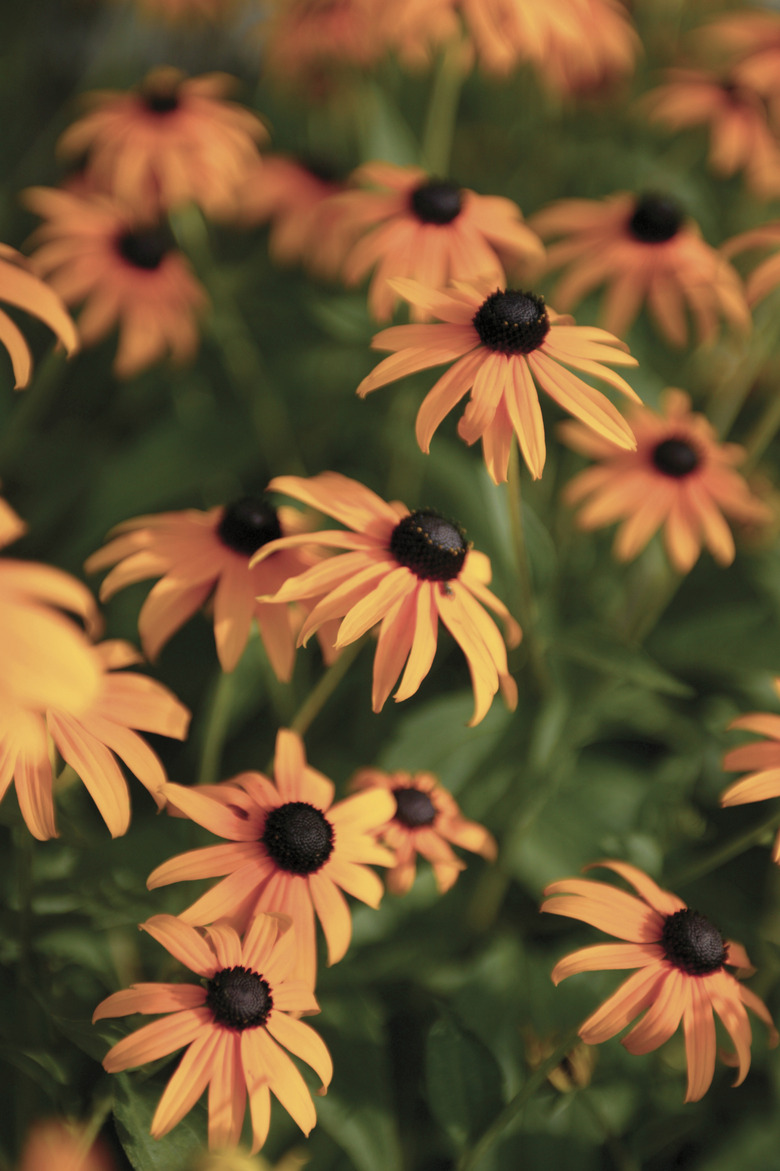When To Cut Back Brown-Eyed Susans
Brown-eyed Susans are bright brown and yellow flowers that grow in excess of 36 inches tall.
Brown-eyed Susans are bright brown and yellow flowers that grow in excess of 36 inches tall. Also known as Black-eyed Susans or Common black-eyed Susan, according to the Lady Bird Johnson Wildflower Center, the Rudbeckia hirta — the plant's scientific name — contains narrow yellow petals with a dark colored, round center. Knowing when to cut back the flower is essential for the health of the planet and maintaining a scenic garden.
Where They Grow
Brown-eyed Susans are a very adaptable flower. The soil nutrients for the plant are very basic, enabling them to sprout in all regions of the U.S. You can often spot brown-eyed Susans in neighborhood gardens, along median strips on the highway, in open fields and in forests.
Wait to Prune
Pruning back brown-eyed Susans is not always necessary. Healthy plants can grow and wilt on their own without worry of damage to subsequent growth. Aged brown-eyed Susans, with their wide flowers and long, dry petals, provide soil protection against the ice and snow. Birds and other wild animals can also feed off of aged brown-eyed Susans during cold months.
- Brown-eyed Susans are bright brown and yellow flowers that grow in excess of 36 inches tall.
- The soil nutrients for the plant are very basic, enabling them to sprout in all regions of the U.S. You can often spot brown-eyed Susans in neighborhood gardens, along median strips on the highway, in open fields and in forests.
Pruning
Cutting back the brown-eyed Susan may also be a necessity. A damaged or sick plant is often plagued by a powdery mildew, according to Purdue University Extension. The mildew can spread to nearby flowers and plants. Feeding insects that crave the brown-eyed Susan, such as the asparagus beetle, may also be an unwelcome addition to your garden.
Timing
Cut back brown-eyed Susans during October and November. Snipping the plant at the stem with a pair of hand pruners, two inches from the soil, is an ideal pruning technique to ensure healthy growth for the following season. Once the seeds at the center of the flower are brown and dry, the plant is ready for removal. You can also wait until after the first one or two frosts of the season to remove the plant.
- Cutting back the brown-eyed Susan may also be a necessity.
- Snipping the plant at the stem with a pair of hand pruners, two inches from the soil, is an ideal pruning technique to ensure healthy growth for the following season.
